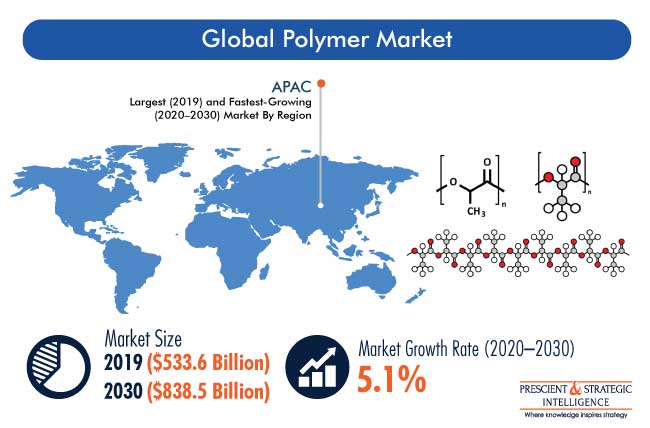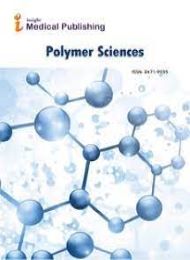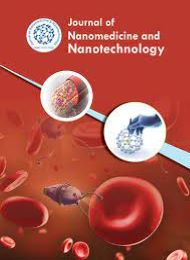Theme: Recent advances and future trends in Biopolymers and Bioplastics
Polymer Science 2022
- Introduction
- Why to attend?
- YRF (Young Research Forum)
- Participation Options and Benefits
- Sessions and Tracks
- Market Analysis
Conference Series LLC Ltd invites you to attend the 3ed International Conference on Polymer Waste- Biopolymers & Bioplastics going to be held on April 25-26, 2022 at Tokyo, Japan. The main theme of the conference is " Reduce Reuse Recycle of Polymers in day to day life"
Polymer Science 2022 International Conference is an attempt to explore the various ways to utilize natural resources for betterment of the future, promising a better tomorrow for the progeny and a better vision for the springing research. Polymers and Biopolymers conferences is anticipated to be one the best scientific conferences in all over the world. The scientific sessions of this International Conference on Polymer Waste and Biopolymers conferences has been designed on vivacious topics such as Polymer Recycle and Polymer Waste Management, Biodegradable Plastics Applications, Green Composites in Biopolymers. Polymer Waste conferences is consisting of well-organized scientific program and effervescent speeches by the expertise. Conference Series LLC Ltd Organizes 300+ Conferences, 500+ Workshops and 200+ Symposiums Every Year on Pharma, Medicine, Science and Technology across USA, Europe & Asia (conference series) with support from 1000 more scientific societies and Publishes 400+ Open access journals which contains over 30000 eminent personalities, reputed scientists as editorial board members. Conference Series Ltd conferences always encourage the young researchers and students to share their excitement and enthusiasm with world class expertise.
Polymer Science 2022 is an event delivering the concept of biobased world across the globe. In the present world where the use of conventional plastics, the consequences of plastic products use and the waste management of these products when they become waste, is a current and pressing issue. Concerns focus on the potential impact of conventional plastics they cause to the environment.
Target Audience:
- Eminent Scientists of biopolymers and bioplastics
- Chemical engineering Research Professors
- Junior/Senior research fellows of biomaterials and bio products
- CEO's of biopolymers companies
- Members of different physics associations of Biopolymers and bioplastics
- Biopolymers doctorates
Prestigious Award for Young Research’s at Polymer science 2022 – “Recent advances and future trends in Biopolymers and Bioplastics”
Polymer science 2022 Committee is glad to announce “3rd International Conference on Polymer Waste - Biopolymers & Bioplastics” on April 25-26, 2022 focusing on the theme: “Recent advances and future trends in Biopolymers and Bio plastics” Polymer science 2022 developments are maintaining their momentum. Polymer science Conference program delves into strategic discussions.
Polymer science 2022 Young Scientist Awards:
Polymer science 2022 Committee is intended to honour prestigious award for talented Young researchers, scientists, Young Investigators, Post-Graduate students, Post-doctoral fellows, Trainees, Junior faculty in recognition of their outstanding contribution towards the conference theme. The Young Scientist Awards make every effort in providing a strong professional development opportunity for early career academicians by meeting experts to exchange and share their experiences on all aspects of Polymer science.
Young Research’s Awards at Polymer science 2022 for the Nomination: Young Researcher Forum - Outstanding Masters/Ph.D./Post Doctorate thesis work Presentation, only 25 presentations acceptable at Polymer science 2022 young research forum.
Benefits
- Young Scientist Award recongination certificate and memento to the winners.
- Our conferences provide best Platform for your research through oral presentations.
- Learn about career improvement with all the latest technologies by networking.
- Young Scientists will get appropriate and timely information by this Forum.
- Platform for collaboration among young researchers for better development.
- Provide an opportunity for research interaction and established senior investigators across the globe in the field.
- Share the ideas with both eminent researchers and mentors.
- It’s a great privilege for young researchers to learn about the research areas for expanding their research knowledge.
Eligibility
- Young Investigators, Post-Graduate students, Post-doctoral fellows, Trainees, Junior faculty with a minimum of 5 years of research experience
- Presentation must be into scientific sessions of the conference.
- Each Young Researcher / Young Scientist can submit only one paper (as first author or co-author).
- Age limit-Under 35yrs
- All submissions must be in English.
PARTICIPATION OPTIONS: Polymer Science 2022 provides the participants with different modes or ways to participate such as Delegate or Speaker under either ACADEMIC / STUDENT / BUSINESS Category. Mode of participation is Online through Power Point Presentation/ Video Presentation on Cisco Webinars.
- Keynote speaker: 45-50 minutes
- Speaker (oral presentation): 25-30 minutes (only one person can present)
- Speaker (workshop): 45-50 minutes (more than 1 can present)
- Speaker (special session): 45-50 minutes (more than 1 can present)
- Speaker (symposium): more than 45 minutes (more than 1 can present)
- Delegate(only registration): will have access to all the sessions with all the benefits of registration
- Poster presenter: can present a poster and enjoy the benefits of delegate
- Remote attendance: can participate via video presentation or e-poster presentation
- Exhibitor: can exhibit his/her company’s products by booking exhibitor booths of different sizes
- Media partner
- Sponsor
- Collaborator
For more details about each mode, kindly contact: https://polymerscience.conferenceseries.com/
Benefits of Joining Conference :
- Get your abstract published with DOI
- Get Certified for your participation
- Reduced Costs Affordability
- Knock Down Geographical Barriers
- Convenience from comfort of your own home or from work
- They’re Archived: Ability to view events in the recording
- Great resource for learning new career skills
- Learn from the Pros
- Global exposure to your research
- Make new connections
- Significant time saving
- Increased engagement
- Wider Reach
- More Engaging
- Position yourself as the expert
- Get your abstracts published with unique DOI in International Journals
- Get up to 50% discounts for publishing your entire article in our open access International Journals
- Get Handbooks and conference kits
- Get an access to the network with eminent personalities from worldwide.
Track 1: Polymer Waste
Polymer recycling is a way to reduce environmental problems caused by polymeric waste accumulation generated from day-to-day applications of polymer materials such packaging and construction. The recycling of polymeric waste helps to conserve natural resource because the most of polymer materials are made from oil and gas. One of the useful properties of polymers is that they are unreactive, so they are suitable for storing food and chemicals safely. Unfortunately, this property makes it difficult to dispose of polymers. They are often buried in landfill sites or incinerated - burned.
Recommended: Biopolymers Conference | Biopolymers & Bio plastics meeting | Bio plastics conference | Polymer Waste Event | Biopolymers & Bio plastics conferences | Polymer Waste conference | Biopolymers & Bio plastics event | Bio plastics event | Bio plastics Meeting | Biopolymers Meeting | Bio plastics meeting | Biopolymers event | Polymer Waste meeting
Track 2: Polymer Waste Management
Increasing volumes of synthetic polymers are manufactured for various applications. The disposal of the used materials is becoming a serious problem. Unlike natural polymers, most synthetic macromolecules cannot be assimilated by microorganisms. Although polymers represent slightly over 10% of total municipal waste, the problem of nonbiodegradability is highlighted by overflowing landfills, polluted marine waters, and unsightly litter.
Recommended: Biopolymers Conference | Biopolymers & Bio plastics meeting | Bio plastics conference | Polymer Waste Event | Biopolymers & Bio plastics conferences | Polymer Waste conference | Biopolymers & Bio plastics event | Bio plastics event | Bio plastics Meeting | Biopolymers Meeting | Bio plastics meeting | Biopolymers event | Polymer Waste meeting
Track 3: Polymer Recycling
Polymer recycling is a way to reduce environmental problems caused by polymeric waste accumulation generated from day-to-day applications of polymer materials such packaging and construction. The recycling of polymeric waste helps to conserve natural resource because the most of polymer materials are made from oil and gas.
Recommended: Biopolymers Conference | Biopolymers & Bio plastics meeting | Bio plastics conference | Polymer Waste Event | Biopolymers & Bio plastics conferences | Polymer Waste conference | Biopolymers & Bio plastics event | Bio plastics event | Bio plastics Meeting | Biopolymers Meeting | Bio plastics meeting | Biopolymers event | Polymer Waste meeting
Track 4: Biopolymers and Bioplastics
Biopolymers are polymers that can be found in or manufactured by, living organisms. These also involve polymers that are obtained from renewable resources that can be used to manufacture Bioplastics by polymerization. There are primarily two types of Biopolymer, one that is obtained from living organisms and another that is produced from renewable resources but require polymerization. Those created by living beings include proteins and carbohydrates.
Bioplastics are plastics derived from renewable biomass sources, such as vegetable fats and oils, corn starch, straw, woodchips, food waste, etc. Bioplastic can be made from agricultural by-products and also from used plastic bottles and other containers using microorganisms. Common plastics, such as fossil-fuel plastics (also called petrobased polymers) are derived from petroleum or natural gas. Not all bioplastics are biodegradable non- biodegrade more readily than commodity fossil-fuel derived plastics. Bioplastics are usually derived from sugar derivatives, including starch, cellulose, lactic acid.
Recommended: Biopolymers Conference | Biopolymers & Bio plastics meeting | Bio plastics conference | Polymer Waste Event | Biopolymers & Bio plastics conferences | Polymer Waste conference | Biopolymers & Bio plastics event | Bio plastics event | Bio plastics Meeting | Biopolymers Meeting | Bio plastics meeting | Biopolymers event | Polymer Waste meeting
Track 5: Biodegradable Plastics Applications
Biodegradable plastics are plastics degraded by microorganisms into water, carbon dioxide (or methane) and biomass under specified conditions. To guide consumers in their decision-making and give them confidence in a plastic’s biodegradability, universal standards have been implemented, new materials have been developed, and a compostable logo has been introduced. Biodegradable plastics can be composed of bio-plastics, which are plastics made from renewable raw materials. There are normally two forms of biodegradable plastic, injection molded and solid. The solid forms normally are used for items such as food containers, leaf collection bags, and water bottles.
Recommended: Biopolymers Conference | Biopolymers & Bio plastics meeting | Bio plastics conference | Polymer Waste Event | Biopolymers & Bio plastics conferences | Polymer Waste conference | Biopolymers & Bio plastics event | Bio plastics event | Bio plastics Meeting | Biopolymers Meeting | Bio plastics meeting | Biopolymers event | Polymer Waste meeting
Track 6: Recycling and Waste management of Biopolymers
Recommended: Biopolymers Conference | Biopolymers & Bio plastics meeting | Bio plastics conference | Polymer Waste Event | Biopolymers & Bio plastics conferences | Polymer Waste conference | Biopolymers & Bio plastics event | Bio plastics event | Bio plastics Meeting | Biopolymers Meeting | Bio plastics meeting | Biopolymers event | Polymer Waste meeting
Track 7: Green Composites in Biopolymers
Whole green composites are the composite materials that are made from both renewable resource based polymer (biopolymer) and biofiller. Whole green composites are recyclable, renewable, triggered biodegradable and could reduce the dependency on the fossil fuel to a great extent when used in interior applications. Whole green composites could have major applications in automotive interiors, interior building applications and major packaging areas. Despite the large number of recent reviews on green composites defined as biopolymers or bio-derived polymers reinforced with natural fibers for bioprocessing of materials, limited investigation has taken place into the most appropriate applications for these materials.
- Bio composites in Biopolymers
- Biopolymers usage in Bio Ceramics
- Biopolymers in Nanotechnology
- Polymer Physics
- Bio-nano Composites for Food packing applications of Biopolymers
- Micro & Nano Blends based on Natural polymers
- Wood & Wood polymer Composites in Biopolymers
- Green Plastics: An Introduction to the New Science of Biodegradable Plastics
Recommended: Biopolymers Conference | Biopolymers & Bio plastics meeting | Bio plastics conference | Polymer Waste Event | Biopolymers & Bio plastics conferences | Polymer Waste conference | Biopolymers & Bio plastics event | Bio plastics event | Bio plastics Meeting | Biopolymers Meeting | Bio plastics meeting | Biopolymers event | Polymer Waste meeting
Track 8: Recycling and Disposal of Polymers
Most plastics crumble into ever-tinier fragments as they are exposed to sunlight and the elements. Except for the small amount that's been incinerated–and it's a very small amount–every bit of plastic ever made still exists, unless the material's molecular structure is designed to favour biodegradation. The use of plastic waste as a fuel source would be an effective means of reducing landfill requirements while recovering energy. This, however, depends on using appropriate materials. Inadequate control of combustion, especially for plastics containing chlorine, fluorine and bromine, constitutes a risk of emitting toxic pollutants.
Recommended: Biopolymers Conference | Biopolymers & Bio plastics meeting | Bio plastics conference | Polymer Waste Event | Biopolymers & Bio plastics conferences | Polymer Waste conference | Biopolymers & Bio plastics event | Bio plastics event | Bio plastics Meeting | Biopolymers Meeting | Bio plastics meeting | Biopolymers event | Polymer Waste meeting
Track 9: Future and Scope of Biopolymers and Bioplastics
In search of novel Advanced Materials solutions and keeping an eye on the goal of sustainable production and consumption, bioplastics have several (potential) benefits. Bio-plastics can replace conventional plastics in the field of their applications also and can be used in different sectors such as food packaging, plastic plates, cups, cutlery, plastic storage bags, storage containers or other plastic or composite materials items you are buying and therefore can help in making environment sustainable. Bio-based polymeric materials are closer to the reality of replacing conventional polymers than ever before.
Recommended: Biopolymers Conference | Biopolymers & Bio plastics meeting | Bio plastics conference | Polymer Waste Event | Biopolymers & Bio plastics conferences | Polymer Waste conference | Biopolymers & Bio plastics event | Bio plastics event | Bio plastics Meeting | Biopolymers Meeting | Bio plastics meeting | Biopolymers event | Polymer Waste meeting
Track 10: Biopolymers in Biomedical Applications
Recommended: Biopolymers Conference | Biopolymers & Bio plastics meeting | Bio plastics conference | Polymer Waste Event | Biopolymers & Bio plastics conferences | Polymer Waste conference | Biopolymers & Bio plastics event | Bio plastics event | Bio plastics Meeting | Biopolymers Meeting | Bio plastics meeting | Biopolymers event | Polymer Waste meeting
Track 11: Biopolymers from Renewable Sources
A wide range of naturally occurring polymers derived from renewable resources are available for material applications.These biopolymers are derived from a diverse set of polysaccharides, proteins, lipids, polyphenols, and specialty polymers produced by bacteria, fungi, plants and animals. Some of these polymers have recently been reviewed. The market for renewable chemicals is in its infancy and is projected to witness dynamic growth at a CAGR of over 10.0% between 2015 and 2020.
Recommended: Biopolymers Conference | Biopolymers & Bio plastics meeting | Bio plastics conference | Polymer Waste Event | Biopolymers & Bio plastics conferences | Polymer Waste conference | Biopolymers & Bio plastics event | Bio plastics event | Bio plastics Meeting | Biopolymers Meeting | Bio plastics meeting | Biopolymers event | Polymer Waste meeting
Track 12: Solid Waste Management of Polymers
The controlled combustion of polymers produces heat energy. The heat energy produced by the burning plastic municipal waste not only can be converted to electrical energy but also helps burn the wet trash that is present. Paper also produces heat when burned, but not as much as do plastics. On the other hand, glass, aluminium and other metals do not release any energy when burned. The disposal of polymer solid waste by means other than landfilling is necessary.
- Recycling of plastic waste by density separation
- Polymers in plastic industry
- Growth opportunities in shifting polymers markets
- Industry profitability for investments on polymers
- Identify most cost-effective raw materials to use
- Polymers in textile marketing
Recommended: Biopolymers Conference | Biopolymers & Bio plastics meeting | Bio plastics conference | Polymer Waste Event | Biopolymers & Bio plastics conferences | Polymer Waste conference | Biopolymers & Bio plastics event | Bio plastics event | Bio plastics Meeting | Biopolymers Meeting | Bio plastics meeting | Biopolymers event | Polymer Waste meeting
Track 13: Polymer Degradation And Stabilization
Polymer Degradation and Stability deals with the degradation reactions and their control which are a major preoccupation of practitioners of the many and diverse aspects of modern polymer technology. Deteriorative reactions occur during processing, when polymers are subjected to heat, oxygen and mechanical stress, and during the useful life of the materials when oxygen and sunlight are the most important degradative agencies.
Recommended: Biopolymers Conference | Biopolymers & Bio plastics meeting | Bio plastics conference | Polymer Waste Event | Biopolymers & Bio plastics conferences | Polymer Waste conference | Biopolymers & Bio plastics event | Bio plastics event | Bio plastics Meeting | Biopolymers Meeting | Bio plastics meeting | Biopolymers event | Polymer Waste meeting
Track 14: Polymer Science And Applications
Polymer Science and Innovative Applications: Materials, Techniques, and Future Developments introduces the science of innovative polymers and composites, their analysis via experimental techniques and simulation, and their utilization in a variety of application areas.
Recommended: Biopolymers Conference | Biopolymers & Bio plastics meeting | Bio plastics conference | Polymer Waste Event | Biopolymers & Bio plastics conferences | Polymer Waste conference | Biopolymers & Bio plastics event | Bio plastics event | Bio plastics Meeting | Biopolymers Meeting | Bio plastics meeting | Biopolymers event | Polymer Waste meeting
Recommended: Biopolymers Conference | Biopolymers & Bio plastics meeting | Bio plastics conference | Polymer Waste Event | Biopolymers & Bio plastics conferences | Polymer Waste conference | Biopolymers & Bio plastics event | Bio plastics event | Bio plastics Meeting | Biopolymers Meeting | Bio plastics meeting | Biopolymers event | Polymer Waste meeting
Recommended: Biopolymers Conference | Biopolymers & Bio plastics meeting | Bio plastics conference | Polymer Waste Event | Biopolymers & Bio plastics conferences | Polymer Waste conference | Biopolymers & Bio plastics event | Bio plastics event | Bio plastics Meeting | Biopolymers Meeting | Bio plastics meeting | Biopolymers event | Polymer Waste meeting

Conference Highlights
- Polymer Waste
- Polymer Waste Management
- Polymer Recycling
- Biopolymers and Bioplastics
- Biodegradable Plastics Applications
- Recycling and Waste management of Biopolymers
- Green Composites in Biopolymers
- Recycling and Disposal of Polymers
- Future and Scope of Biopolymers and Bioplastics
- Biopolymers in Biomedical Applications
- Biopolymers from Renewable Sources
- Solid Waste Management of Polymers
- Polymer Degradation And Stabilization
- Polymer Science And Applications
- Environmental impact of polymer-waste disposal
- Polymer engineering
- Ocean plastics
- Bio plastics and its Applications
- Marine Biopolymers Based Nanomaterials
- Imminent Ambits of Biopolymers
- Polymers Nanotechnology
- Natural Polymer-Advanced Polymers & its phenomenon
To share your views and research, please click here to register for the Conference.
To Collaborate Scientific Professionals around the World
| Conference Date | April 29-30, 2022 | ||
| Sponsors & Exhibitors |
|
||
| Speaker Opportunity Closed | |||
| Poster Opportunity Closed | Click Here to View | ||
Useful Links
Special Issues
All accepted abstracts will be published in respective Our International Journals.
- Journal of Polymer Sciences
- Journal of Nanomedicine & Nanotechnology
- Journal of Polymer Science & Applications
Abstracts will be provided with Digital Object Identifier by










